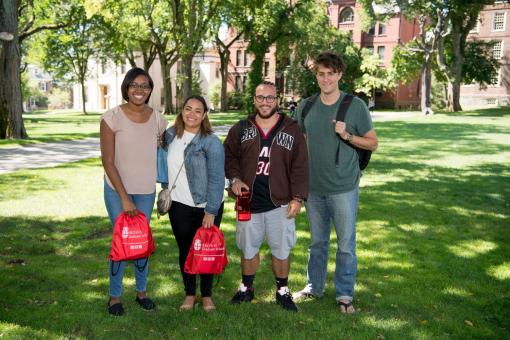 This percentage remains steady at Brown, despite declining trends nationally. The Graduate School accepted 10% of applicants to Brown's 51 doctoral programs, a selectivity rate that has increased each of the past five years. The new international PhD students come from 39 nations, with the largest number from China and India. Among the new domestic students, 31% self-identify as members of historically underrepresented groups (HUG), which is the highest percentage to date and an increase of 18% from last year.
This percentage remains steady at Brown, despite declining trends nationally. The Graduate School accepted 10% of applicants to Brown's 51 doctoral programs, a selectivity rate that has increased each of the past five years. The new international PhD students come from 39 nations, with the largest number from China and India. Among the new domestic students, 31% self-identify as members of historically underrepresented groups (HUG), which is the highest percentage to date and an increase of 18% from last year.
“The Graduate School has again admitted an outstanding doctoral cohort. Among the entering students international matriculants remain steady and the number of admitted students from historically underrepresented groups surpassed last year’s historic mark, bringing us to our highest level in the history of the Graduate School. It’s clear that applicants from across the U.S. and world want to be at Brown.”
Brown University has made significant investments in graduate education and doctoral-student support, including recent initiatives to diversify the graduate student body under Brown’s Diversity and Inclusion Action Plan. For the first time in 2018, incoming doctoral students will receive a transitional stipend to help offset moving and other costs associated with relocating to Providence and beginning Graduate School. Last year was the inaugural year for the Diversity Fellowships to top admitted doctoral students, with priority given to students from historically underrepresented groups. Diversity Fellowships include enhanced stipends and a one-time research account. Other recent investments include the introduction of no-cost dental insurance for doctoral students (2015-16), parental relief (July 2016), new services for international students through the Office of Global Engagement (2016-17), and increased summer support for those in the humanities and social sciences (2017-18).
Overall, applications to doctoral programs increased 1.7% compared with the prior year. The number of applicants from historically underrepresented groups rose by 12%, while international applications remained steady. Admission season is currently closed. To date, total master’s program applications are up 2.5% from 2017. The data cited in this report are as of June 20, 2018.